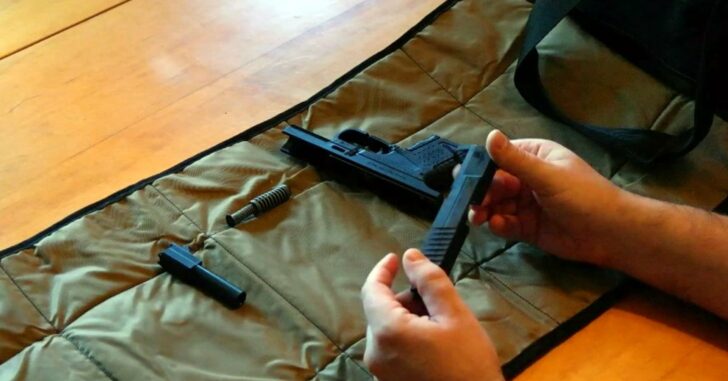Not all semi-automatic handguns are built the same. There are different eras of pistols, different configurations, firing mechanisms, etc. In this article, I’m going to attempt to break down the basic parts of most conventional semi-automatic handguns for a quick, easy reference for those needing a very basic resource.
In general, I recommend getting into the habit of always checking the chamber visually and manually to ensure no round is present prior to breaking down a pistol into its basic parts.
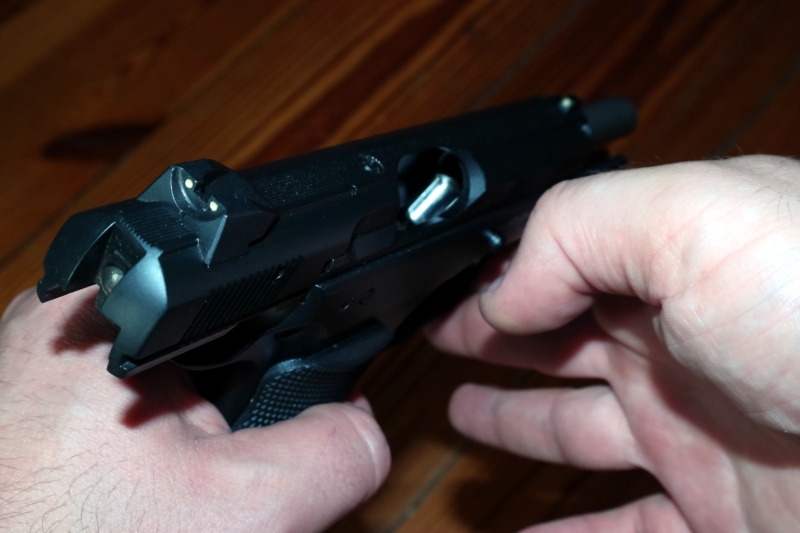
Because there are so many different semi-automatic handguns out there on the market, it would be virtually impossible to cover them all in the space of a single article. I will take some notable examples and go from there.
Double Action Only Basic Parts
When you purchase a handgun, you’ll find a manufacturer’s guide to that make and model of pistol. In that guide, you’ll find a basic breakdown of the pistol for the consumer.
For the Sig Sauer P250 — which is no longer in production if I’m correct — there are seven basic parts you’ll see in a basic take-down.
- Upper receiver
The upper receiver houses the barrel, recoil spring and recoil pin.
- Lower receiver
The lower receiver houses the trigger assembly, take-down lever, magazine release, double-action hammer and grip module.
- Magazine
The magazine typically has a floorplate, spring, and follower (the tab that pushes up the rounds).

For the Sig Sauer P250, basic take-down only includes the parts shown in the above picture. This is good enough to do basic cleaning. Remove rounds from the magazine prior to cleaning.
Always refer to your owner’s manual. If you don’t have one that came with your gun, check online with your gun manufacturer and see if you can find a copy of theirs. It’s usually in PDF form which you can then print out for your own personal reference.
Single Action – Double Action Basic Parts
For this section, I’m going to use two example pistols: the Beretta 92 and CZ-75. They are both SA/DA pistols but their take-down is slightly different.
Unlike a DAO or Striker Fire pistol, SA/DA pistols have a hammer that can be selectively brought back for single-action first shots. Because we always start a basic take-down from the starting point of ejecting the magazine, locking the slide to the rear and manually and visually checking to ensure the firearm is unloaded, there’s really not too much to worry about.
For most common CZ-75s, you’re going to start basic disassembly by turning the manual safety off (if present). Next, pull back the upper receiver until a vertical mark on it marries up with a similar one on the lower receiver.
Take out the slide stop.
Pull the upper receiver forward.
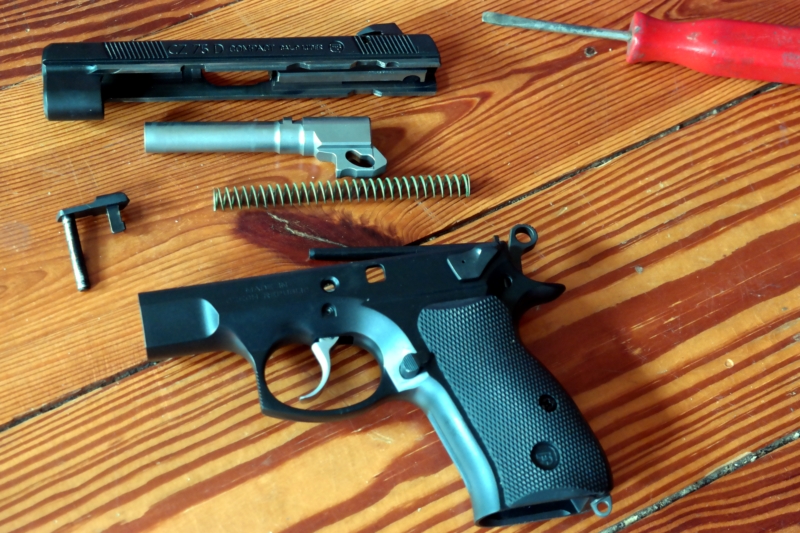
No screwdriver required. Pay no attention to it in this photo.
For basic parts of the CZ-75, you will have the upper receiver, barrel, recoil spring, recoil pin, slide stop, lower receiver, and your empty magazine.
Armorers and gun enthusiasts may go a few steps further depending upon what they need to accomplish but this is the basic consumer-level breakdown of a conventional CZ-75 variant semi-automatic pistol.
For the Beretta 92, it’s a bit simpler. You’ll need to press the disassembling latch release before rotating the disassembling latch clockwise.
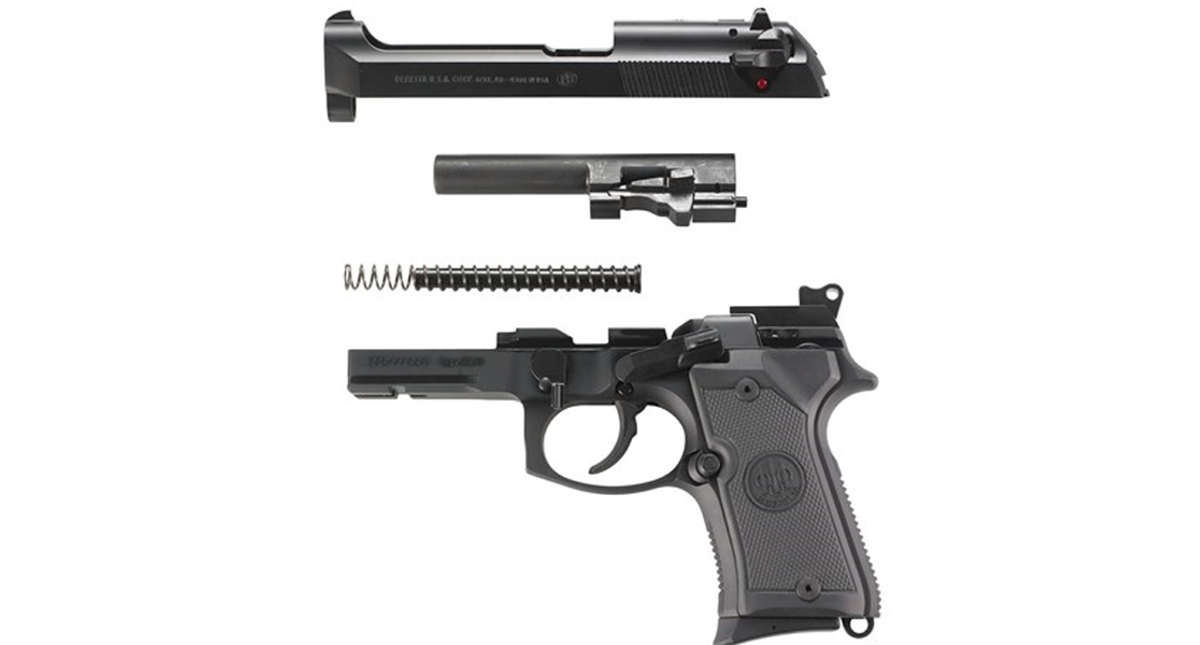
The basic parts of a Beretta 92 are shown in the image above. They are (in no particular order) recoil spring assembly — spring and rod, upper receiver, barrel, and lower receiver.
And there you have it. Those are the basic parts of those two SA/DA semi-automatic pistols.
Striker Fire Basic Parts
Just like in the previous two categories, there are quite a lot of striker fire pistols. Because we have to stick to the basics, let’s go with the Glock 19 – Gen 4 and the M&P Shield.
For M&P Shields with a safety, that safety will need to stay engaged during the take-down process. If your model doesn’t have a safety, don’t worry about it. You’re still going to do the basics first: eject magazine, lock upper receiver to the rear, manually and visually inspect the inside of the chamber for rounds or casings.
With the slide locked to the rear, rotate the take-down lever 90 degrees clockwise. You can release the upper receiver and guide it off the rails until it is separated from the lower receiver. Now you can take out the barrel and the recoil spring assembly.
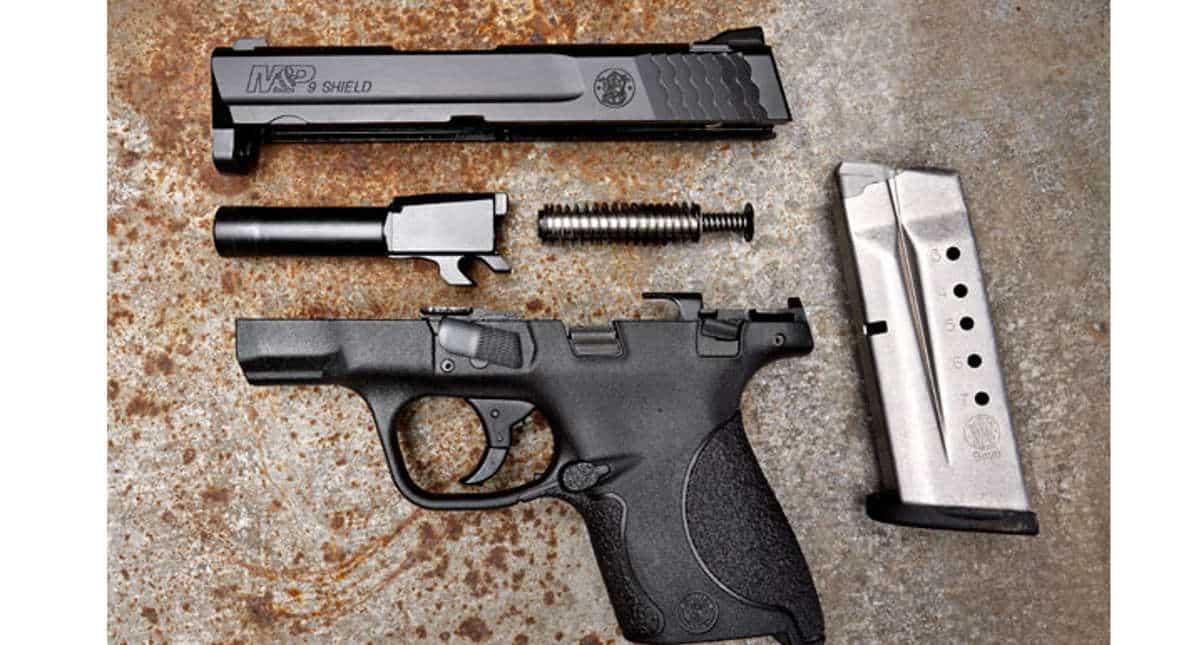
The above image indicates what the M&P Shield looks like when it is disassembled for basic maintenance. You should see the barrel, recoil spring assembly, upper receiver, lower receiver, and empty magazine.
A Glock 19 Gen 4 is similar. The take-down method is slightly different. Instead of locking the slide to the rear, you’re going to only pull it back around a tenth of an inch while depressing down both sides of the slide lock with your index and middle fingers of your other hand. The upper receiver should slide off. From there, you just remove the recoil spring assembly and the barrel from the upper receiver.
You will be left with the following parts: barrel, recoil spring assembly, lower receiver, upper receiver and empty magazine.
You may notice an overarching theme when it comes to semi-automatic handguns: basic parts include the barrel, recoil spring assembly, upper receiver, lower receiver, and magazine.
When it comes to YOUR pistol, find your owner’s manual and follow their instructions for basic disassembly. You do not need to go down to pins and small springs unless something is confirmed broken.
In that case, I honestly recommend seeking out a certified armorer or gunsmith. When in doubt — and if the gun was purchased new-in-box (NIB) — always seek out the manufacturer to determine if it’s something they can fix.

